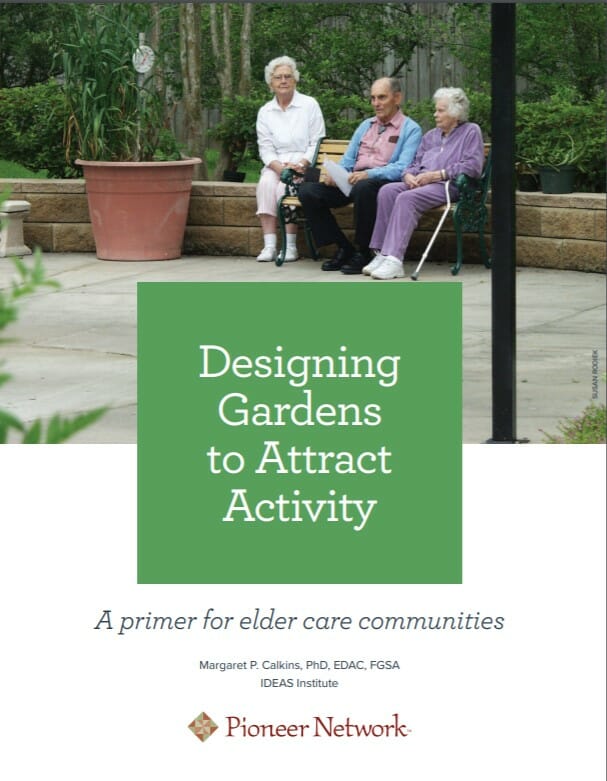A new white paper aims to give senior living communities a blueprint for designing outdoor spaces that are practical, accessible and usable.

The paper provides research on the importance of outdoor spaces, guidance on how to design areas where people want to spend time, and resources for getting started.
“Designing Gardens to Attract Activity” was created by Innovative Designs in Environment for an Aging Society Institute and Rochester, NY-based elder care advocate organization Pioneer Network. It offers independent living, assisted living and memory care communities, as well as nursing homes, a guide to using existing outdoor spaces to improve quality of life for residents.
“There is clear evidence that people are at lower risk of infection when spending time outdoors, practicing social distancing and wearing masks, than when following the same precautions indoors,” said author Margaret P. Calkins, Ph.D., board chair of the IDEAS Institute, the education arm of the Kirtland, OH-based consulting firm.
The report highlights the benefits of spending time outdoors, including reduced depression and stress, improved sleep and cognition, and more exposure to vitamin D.
Senior living communities often spend large amounts of money creating “lovely” outdoor spaces only to be disappointed by the lack of use, Calkins said. The reasons for underutilization, she noted, usually relate to design, maintenance, operational issues and overall organizational culture.
Poor access to outside spaces, lack of protection from sun, insufficient flexible seating, lack of active or passive elements of interest and policies that limit access are common shortcomings, according to the resource.
A Senior’s Outdoor Survey tool provides a starting place for operators to evaluate an existing environment. It also can be used during the design process to help ensure that important elements are included in a garden, including access to nature, walking and outdoor activities, outdoor comfort and safety, indoor-outdoor connection, and connection to the world.
Calkins suggests involving residents and family members in the planning process so that spaces reflect their interests — as well as staff and maintenance staff, who will be responsible for supporting residents going outside and maintaining the outdoor space.
“Don’t try to plan the garden all on your own, or with a designer who wants to go back to the office and design something for you without the active input of the people who will be using the gardens,” Calkins said in the report. “The more appealing the garden is for people to be outside doing things, including maintaining the gardens, the less the staff will have to do.”




